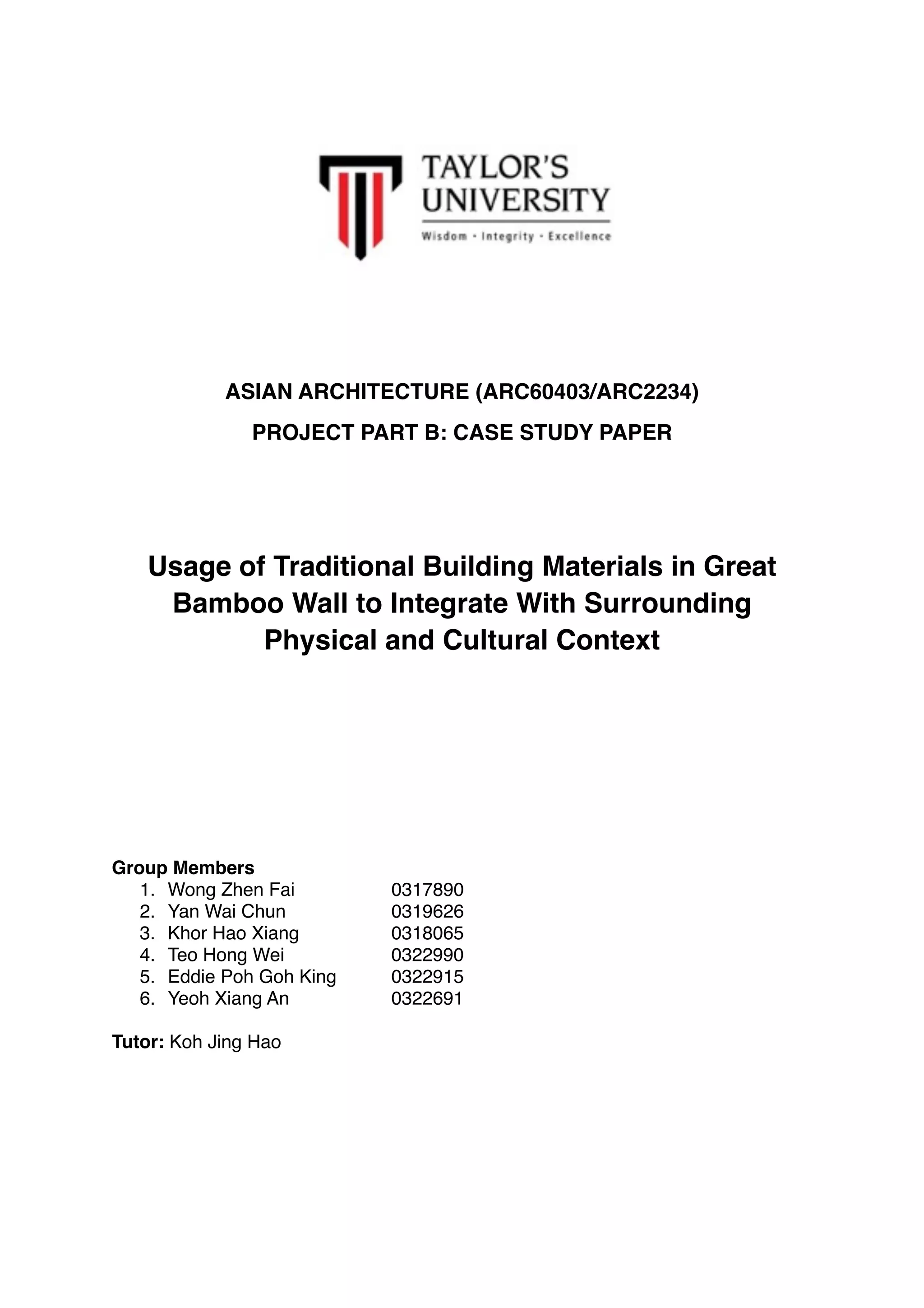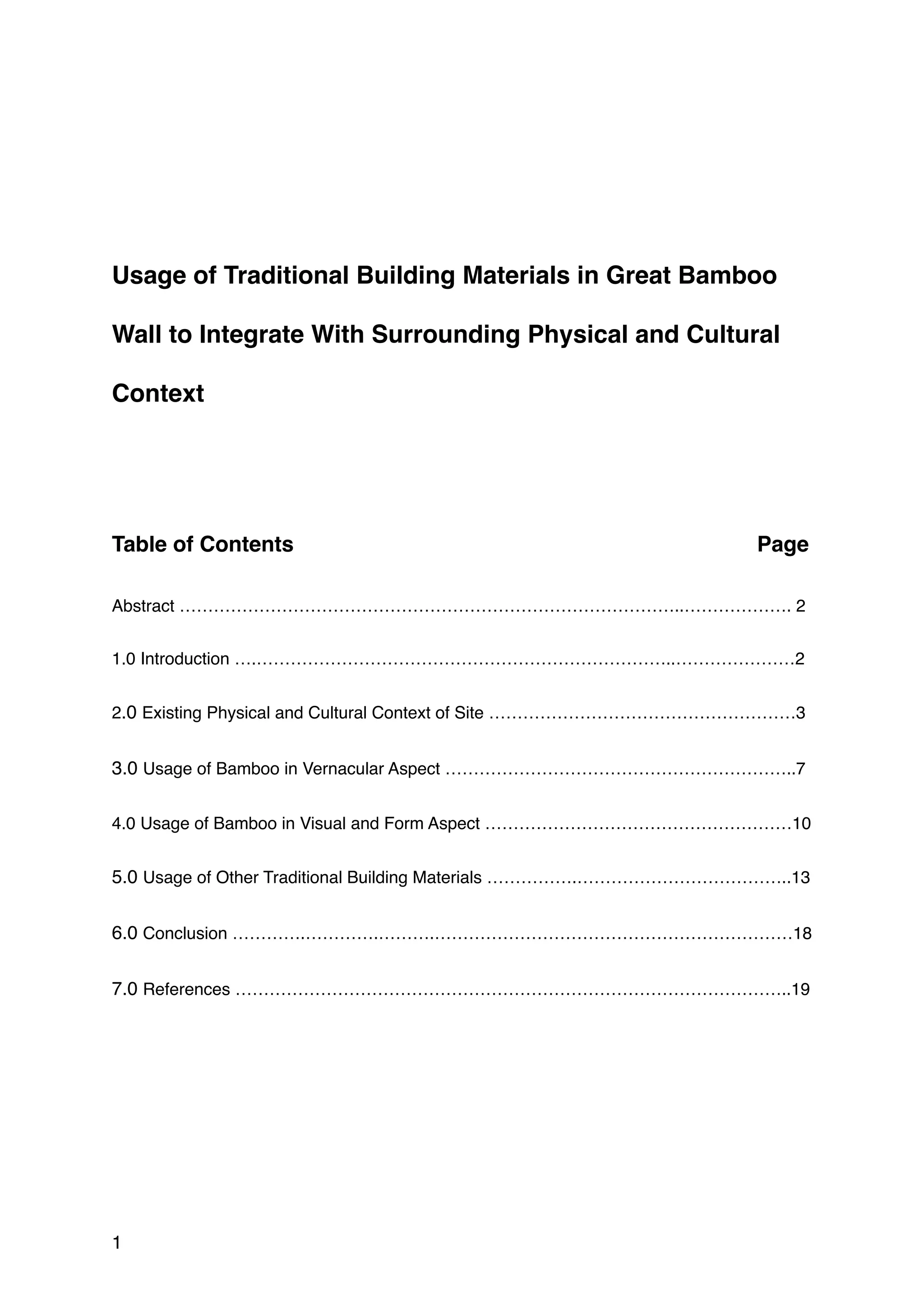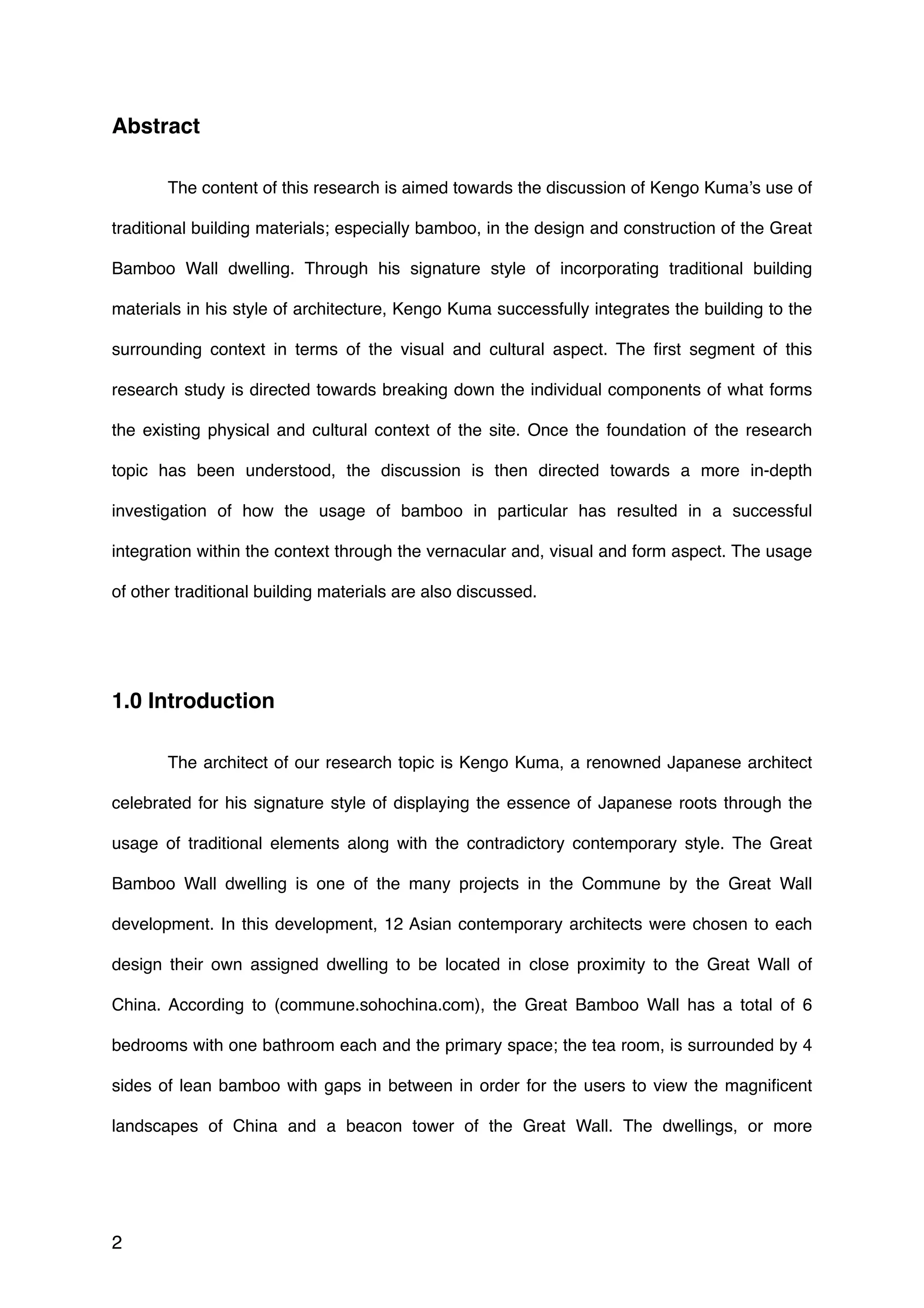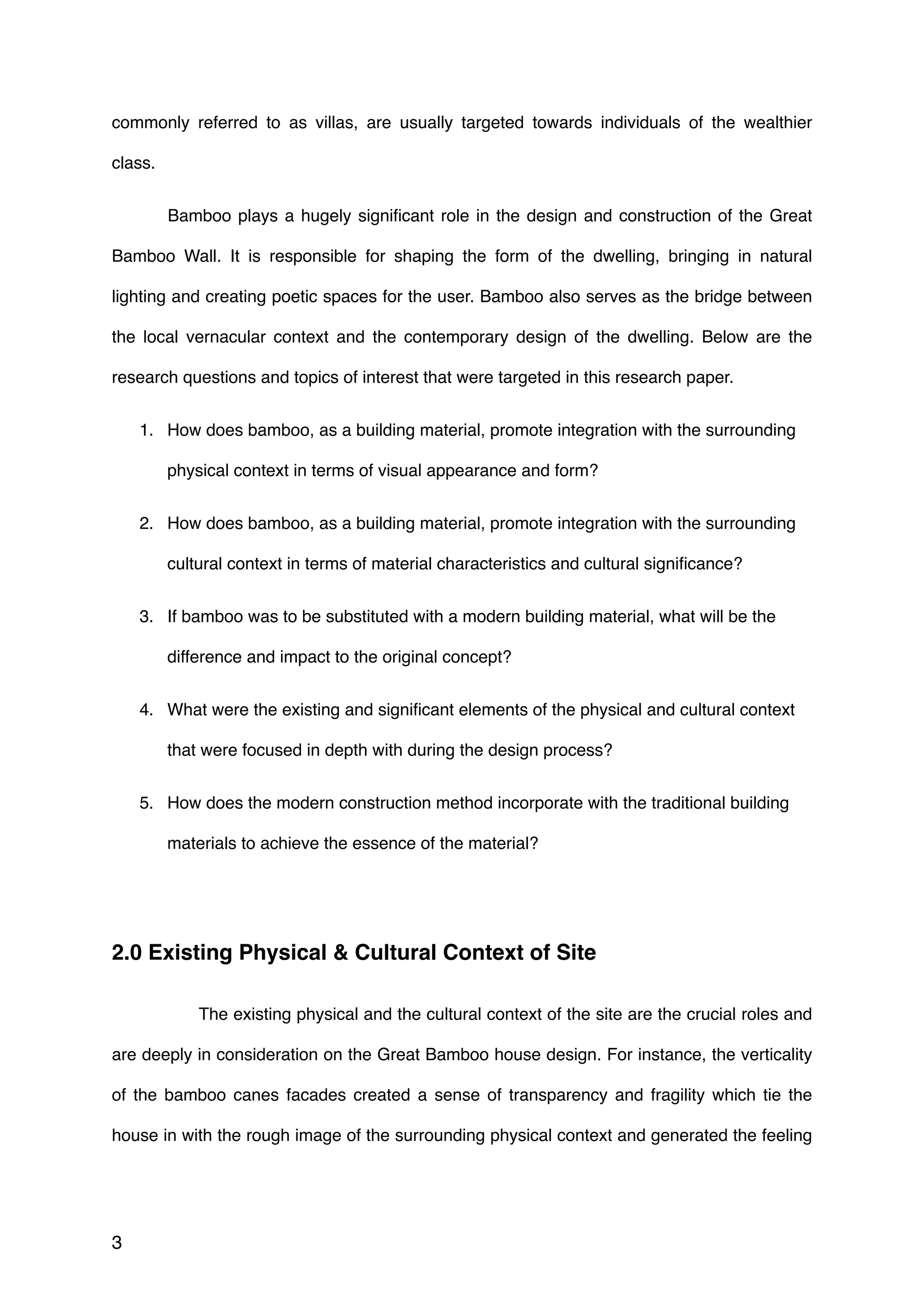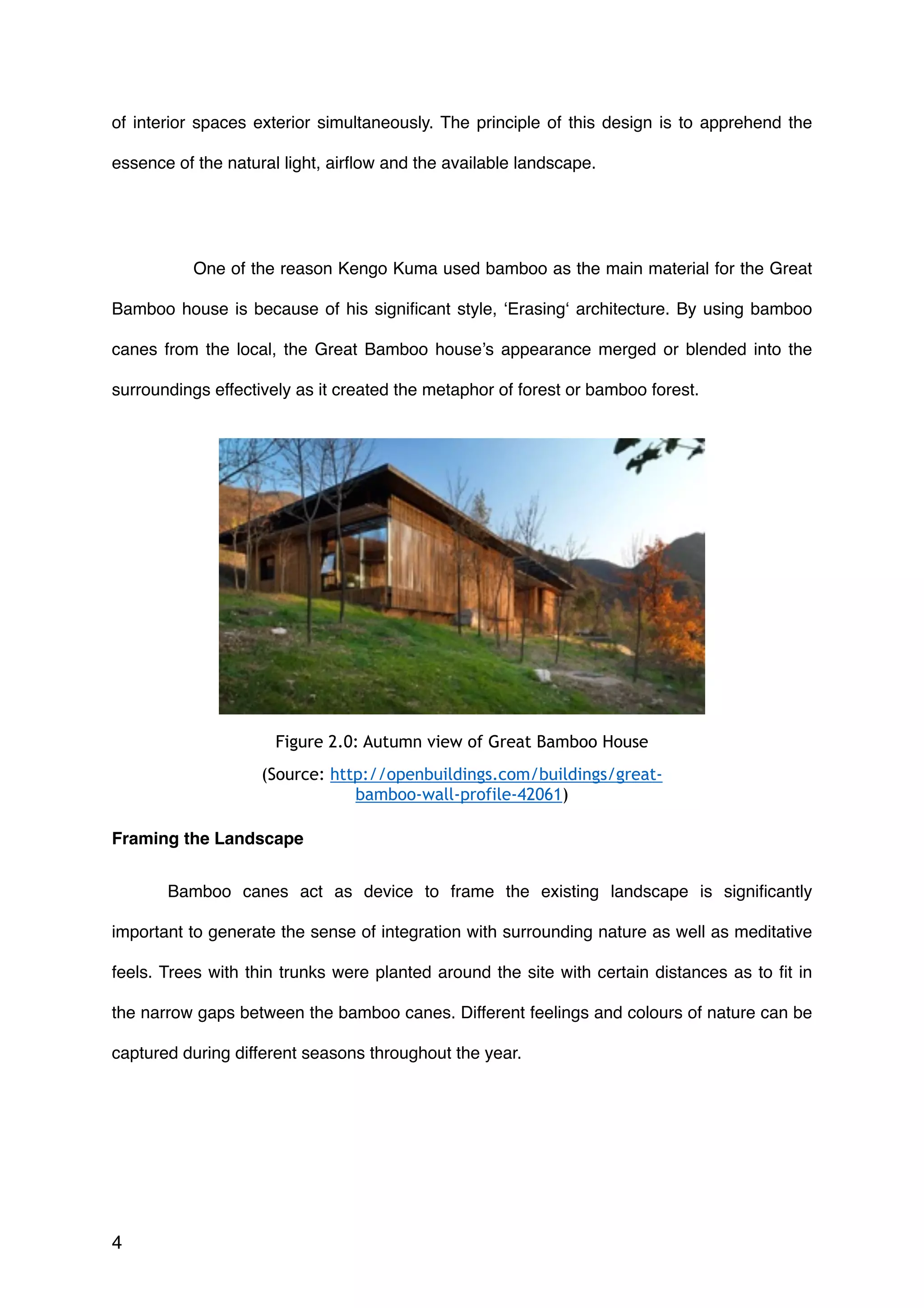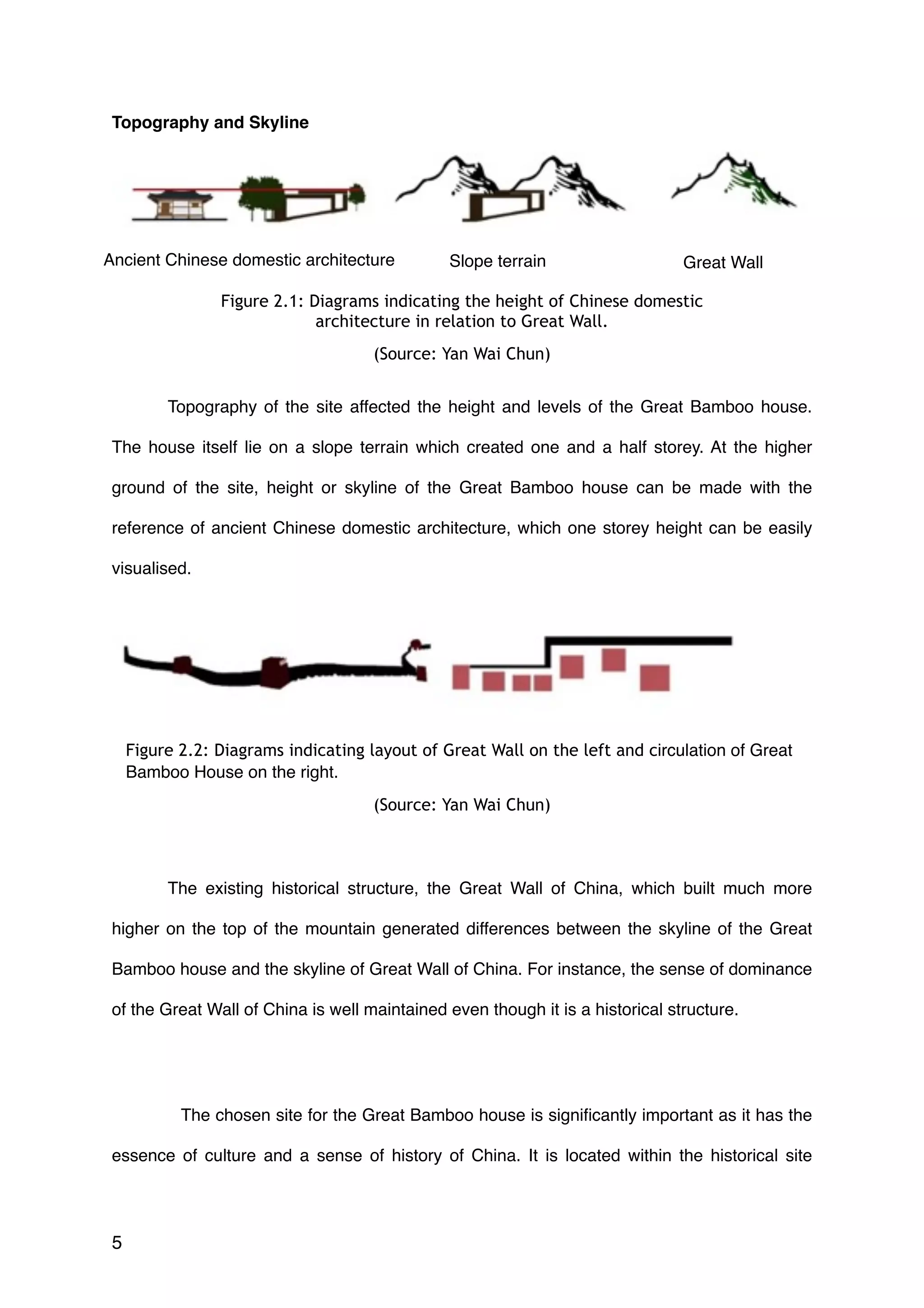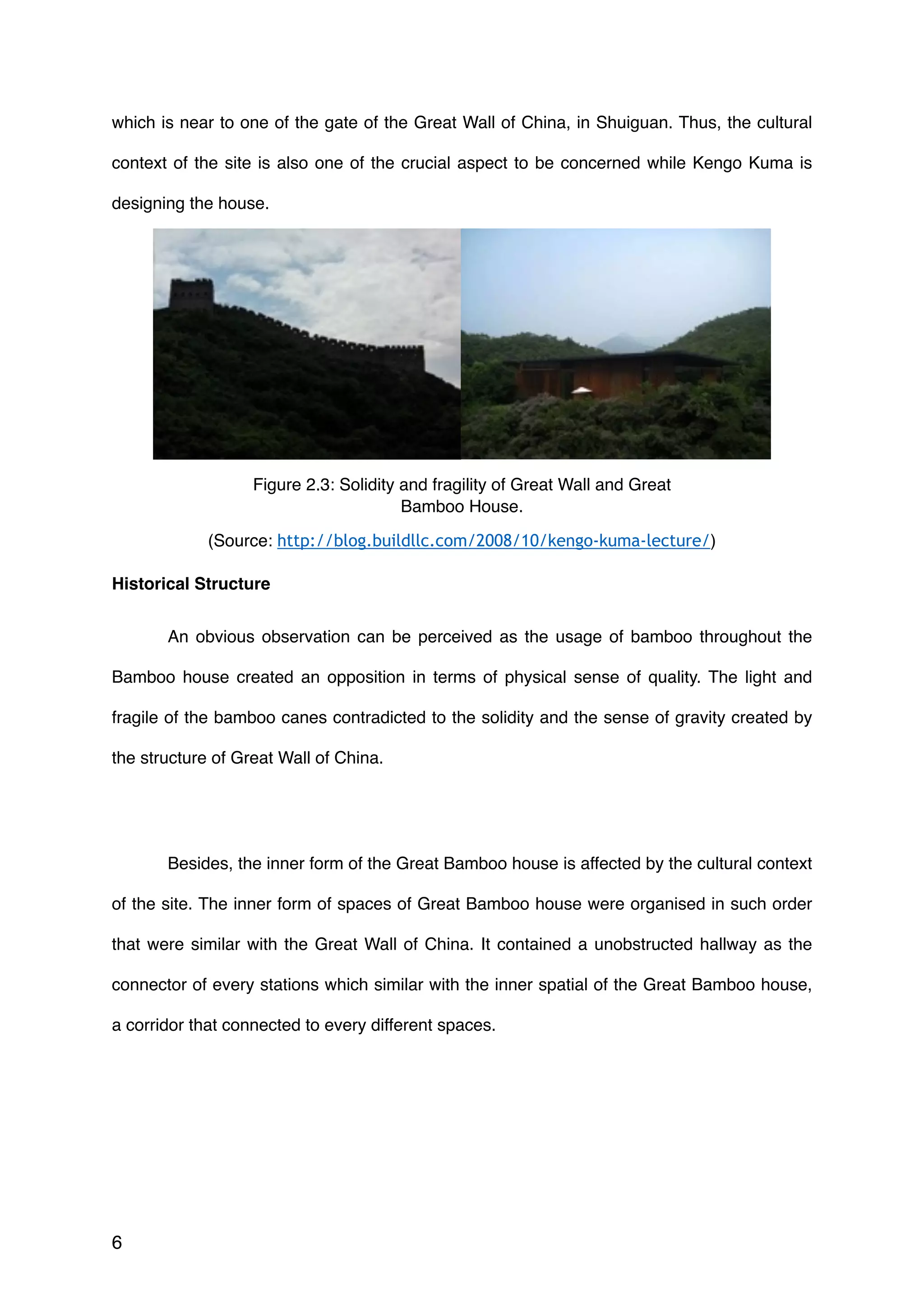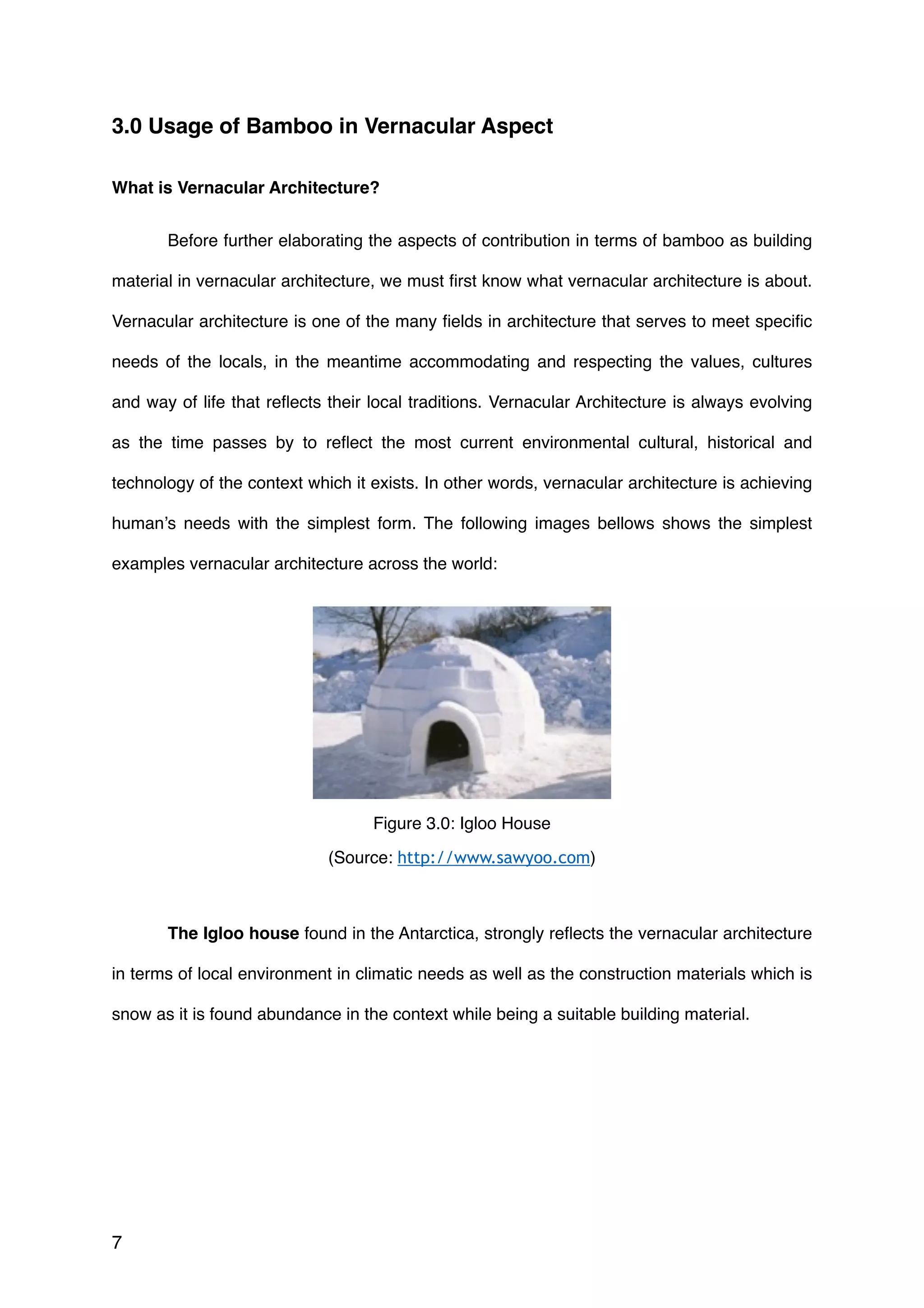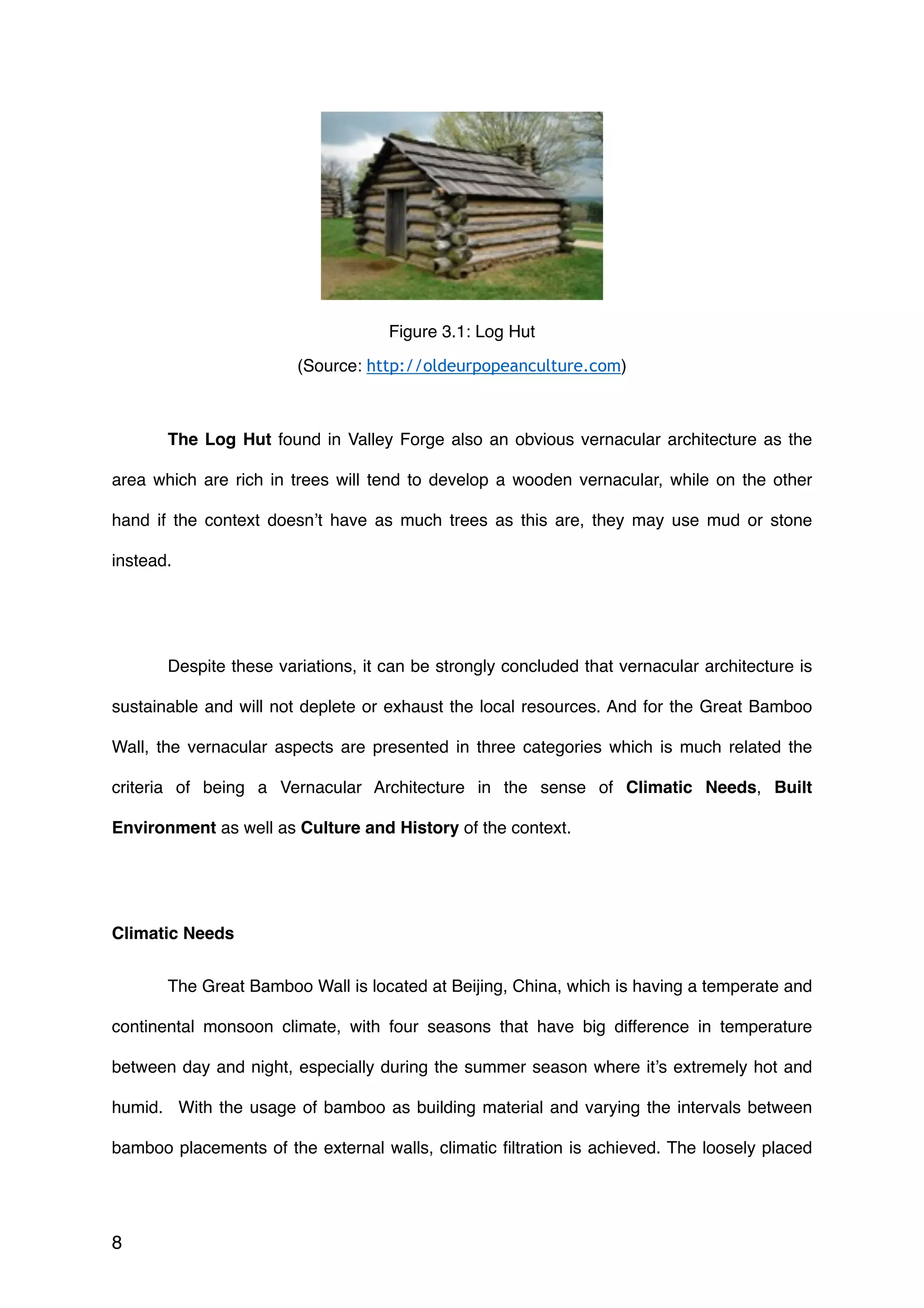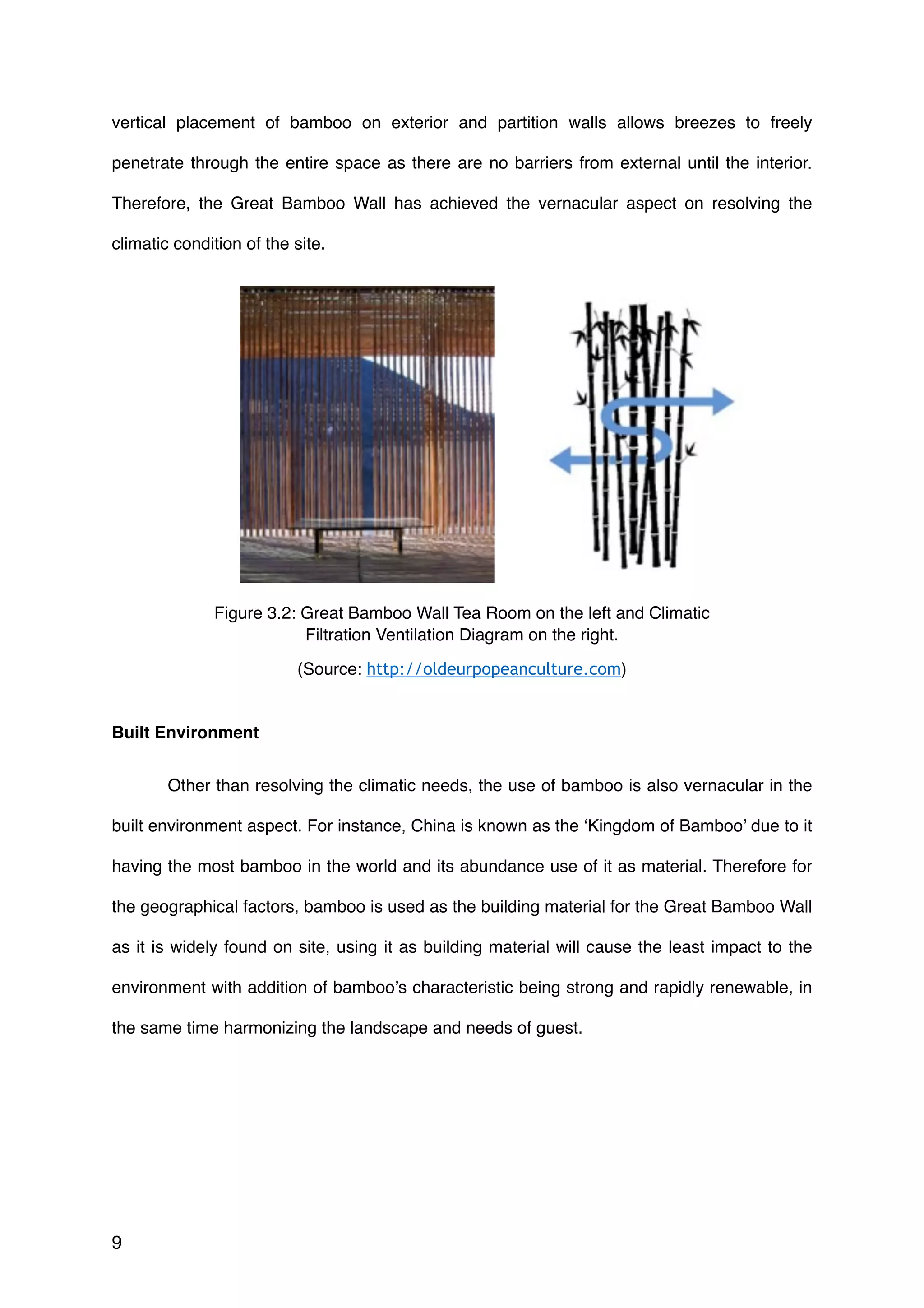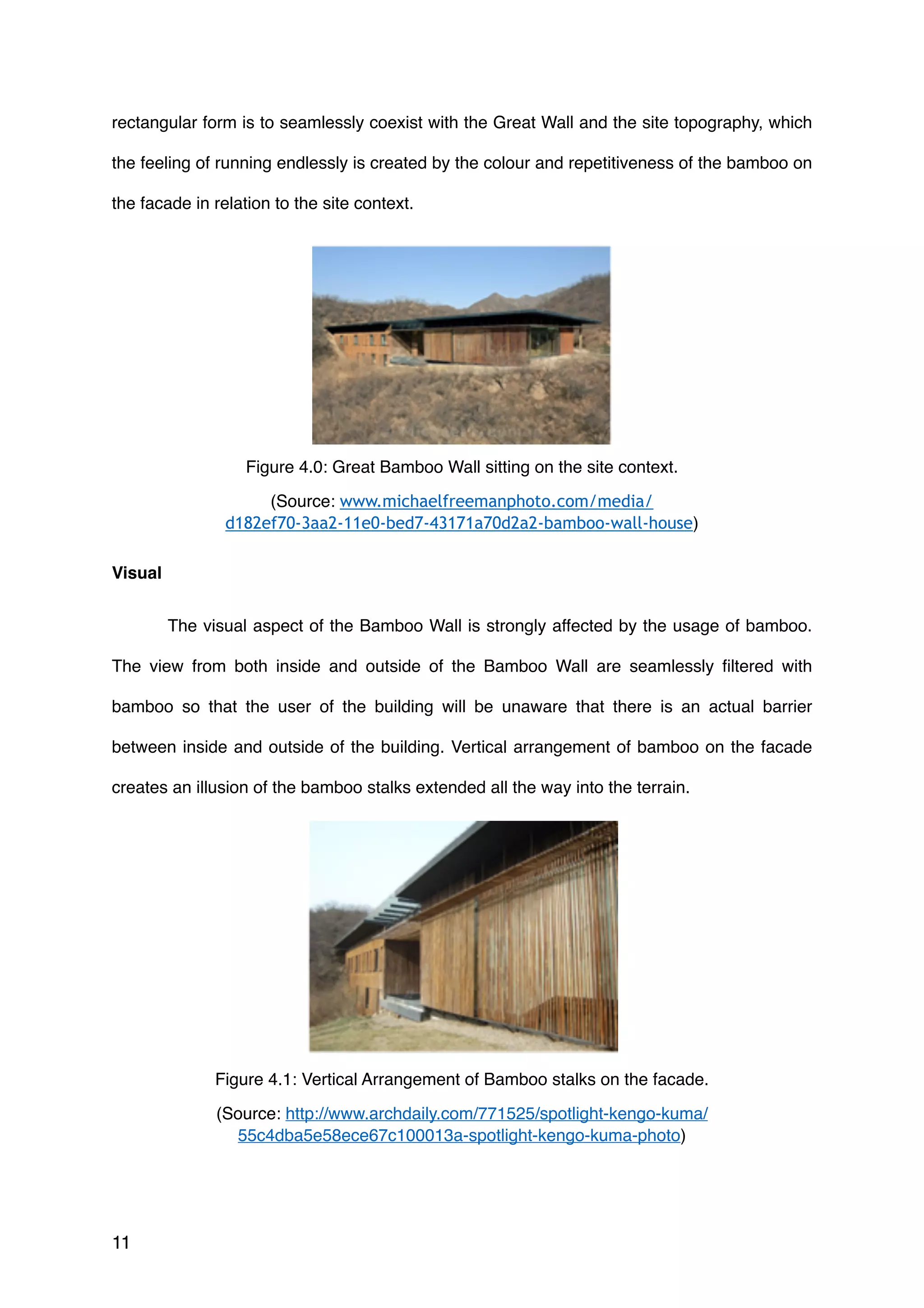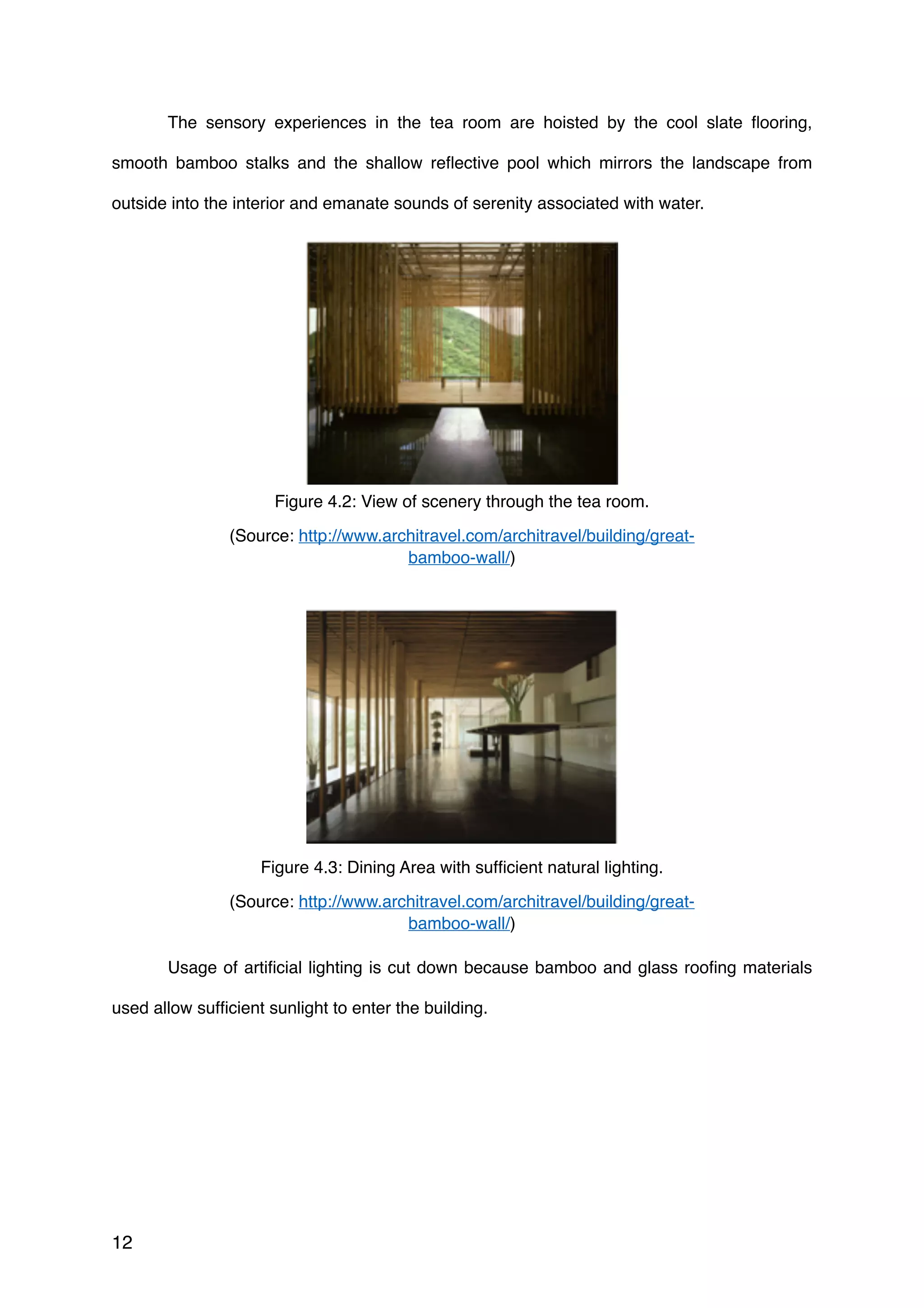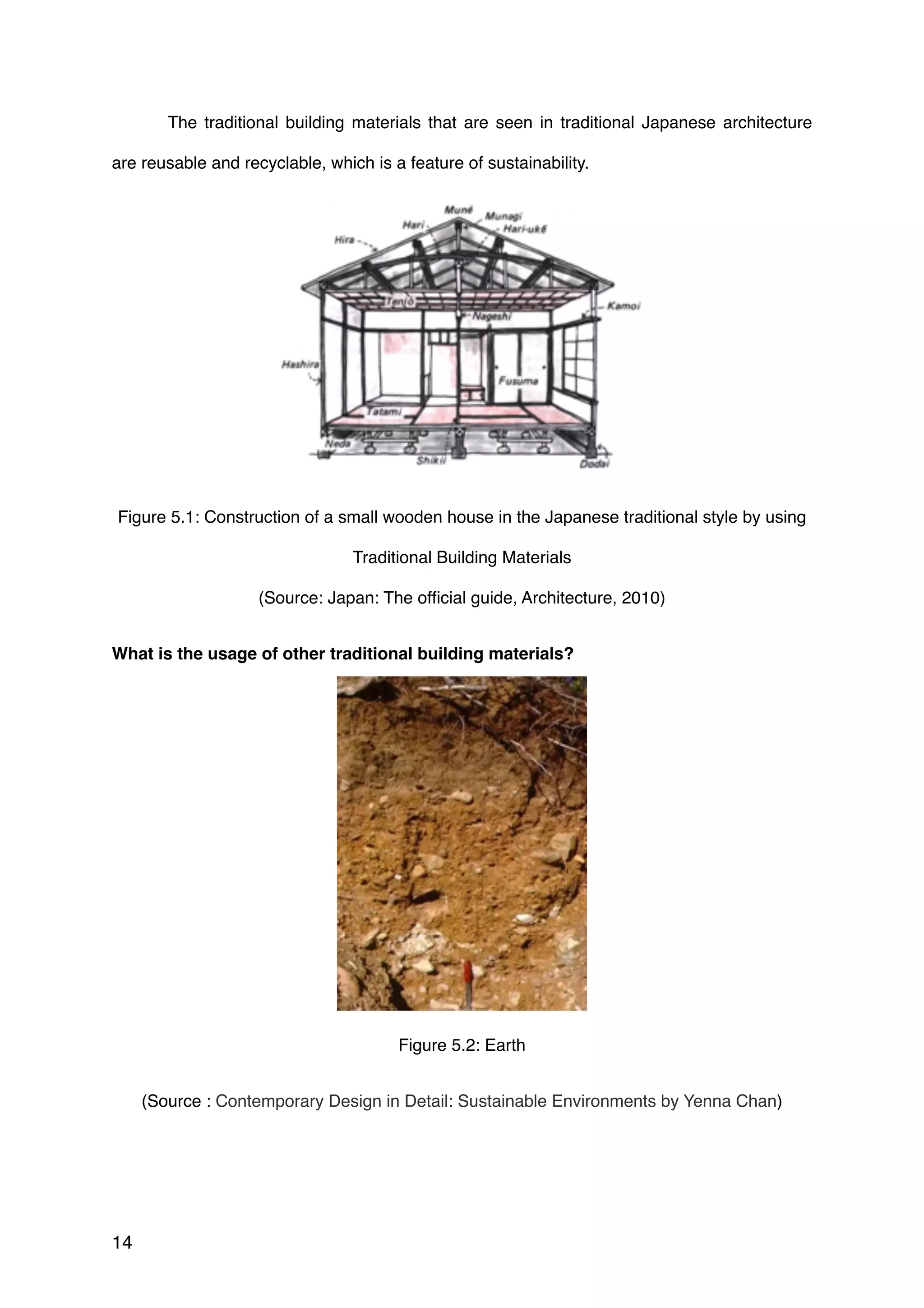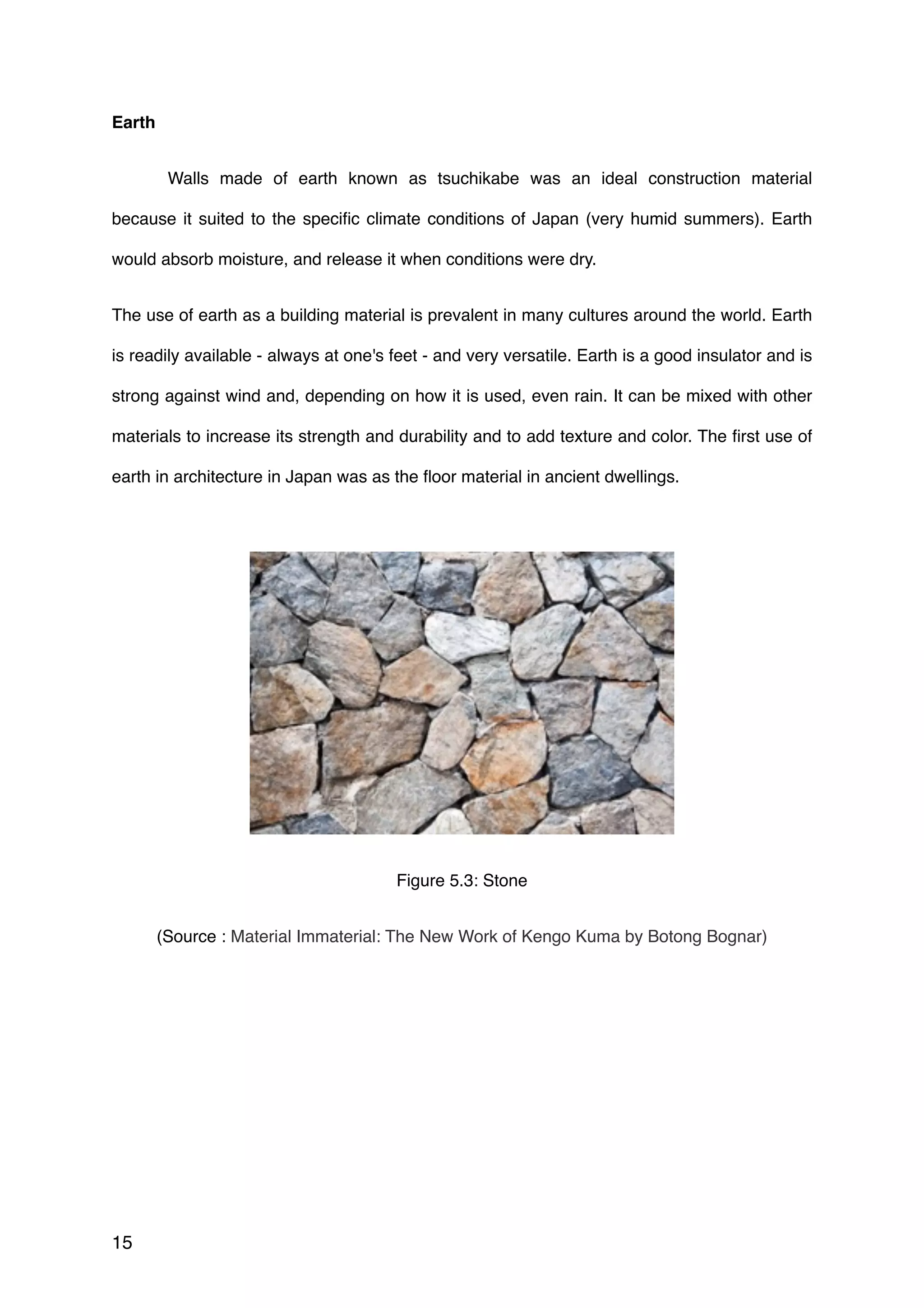The document discusses Kengo Kuma's Great Bamboo Wall dwelling located in China near the Great Wall. It analyzes how Kuma used traditional building materials, especially bamboo, to successfully integrate the dwelling with the surrounding physical and cultural context. Bamboo was used in the structure, facade, and interior partitions to promote natural ventilation, framing of the landscape, and cultural significance. The usage of bamboo and other local materials like earth and stone achieved a vernacular design that respected the local environment, traditions, and climate of northern China.
